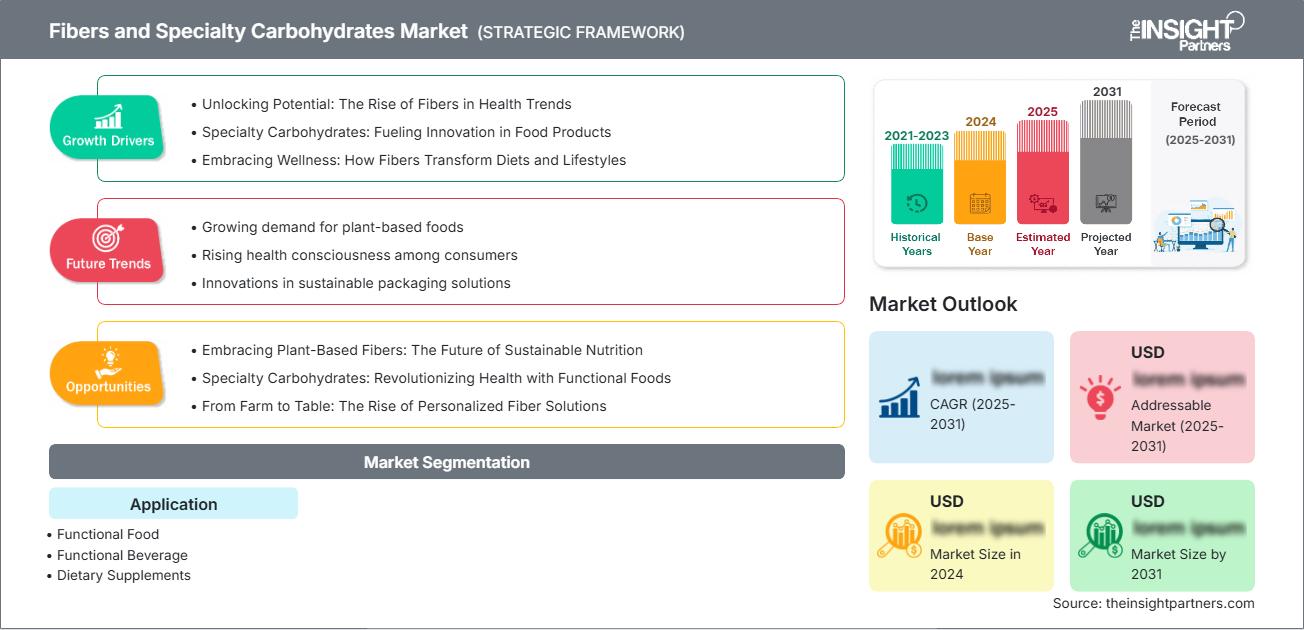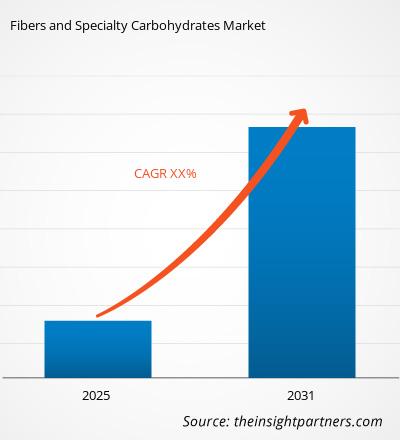MARKTEINFÜHRUNG
Ballaststoffe sind grundsätzlich Kohlenhydrate, die der Mensch nicht verdauen kann. Obwohl die meisten Kohlenhydrate in Zuckermoleküle zerlegt werden, können Ballaststoffe nicht in Zuckermoleküle zerlegt werden und passieren den Körper unverdaut. Ballaststoffe helfen, die Zuckerverwertung des Körpers zu regulieren und helfen so, Hunger und Blutzuckerspiegel im Zaum zu halten. Ballaststoffe werden hauptsächlich im Dickdarm teilweise oder vollständig fermentiert. Spezialkohlenhydrate werden als Nutraceuticals bezeichnet, die aus Präbiotika und Probiotika gewonnen werden. Wer sich ballaststoffreich ernährt, kann Krankheiten wie Darmkrebs, Diabetes, koronare Herzkrankheit und andere vorbeugen. Spezialkohlenhydrate sind komplexe Substanzen, die aus Einfachzuckern wie Glucose, Galactose, Sialinsäure, L-Fucose und Glucosamin hergestellt werden. In der Natur kommen sie hauptsächlich in Milch vor. Sie finden Anwendung in Branchen wie Nutraceuticals, Kosmetika, Pharmazeutika und Pflanzenschutzmitteln. Ballaststoffe und spezielle Kohlenhydrate spielen eine wichtige Rolle für die Gesundheit von Mensch und Tier und gelten als wichtige Innovationsquelle in den Bereichen Wellness, Pharmazie, Biomedizin und Kosmetik.
MARKTDYNAMIK
Der Markt für Ballaststoffe und Spezialkohlenhydrate verzeichnet aufgrund von Faktoren wie der breiteren Anwendung in funktionellen Lebensmitteln, funktionellen Getränken, Nahrungsergänzungsmitteln, Tiernahrung und Körperpflege ein deutliches Wachstum. Das wachsende Gesundheits- und Wellnessbewusstsein der Verbraucher in Entwicklungsländern wie Indien, China, Mexiko und dem Nahen Osten treibt den Markt für Ballaststoffe und Nahrungsergänzungsmittel an. Fitnessstudios und Fitnesscenter sind derzeit weit verbreitet, was das Marktwachstum für Ballaststoffe und Spezialkohlenhydrate voraussichtlich weiter ankurbeln wird. Die steigende Nachfrage nach neuen Produkten wie Phytochemikalien und Carotinoiden als Nutraceutical-Inhaltsstoffe aufgrund ihrer überlegenen Eigenschaften, einschließlich einer hervorragenden Antioxidationsmittelwirkung, könnte den Markt für Ballaststoffe und Spezialkohlenhydrate jedoch behindern. Dennoch wird erwartet, dass der einfache Zugang zu Rohstoffen und die positive Entwicklung des Sektors für funktionelle Lebensmittel in vielen Ländern Branchenteilnehmer zu Investitionen in diesem Markt bewegen werden.
Sie erhalten kostenlos Anpassungen an jedem Bericht, einschließlich Teilen dieses Berichts oder einer Analyse auf Länderebene, eines Excel-Datenpakets sowie tolle Angebote und Rabatte für Start-ups und Universitäten.
Markt für Fasern und Spezialkohlenhydrate: Strategische Einblicke

-
Holen Sie sich die wichtigsten Markttrends aus diesem Bericht.Dieses KOSTENLOSE Beispiel umfasst Datenanalysen, die von Markttrends bis hin zu Schätzungen und Prognosen reichen.
Die „Globale Marktanalyse für Fasern bis 2031“ ist eine spezialisierte und detaillierte Studie der Lebensmittel- und Getränkeindustrie mit besonderem Fokus auf der Analyse globaler Markttrends. Der Bericht bietet einen Überblick über den Markt für Fasern und Spezialkohlenhydrate mit detaillierter Marktsegmentierung nach Anwendung und geografischer Lage. Der globale Markt für Fasern und Spezialkohlenhydrate wird im Prognosezeitraum voraussichtlich stark wachsen. Der Bericht liefert wichtige Statistiken zur Marktposition der führenden Akteure im Bereich Fasern und Spezialkohlenhydrate und zeigt wichtige Trends und Chancen auf.
Regionale Einblicke in den Markt für Ballaststoffe und Spezialkohlenhydrate
Die Analysten von The Insight Partners haben die regionalen Trends und Faktoren, die den Markt für Fasern und Spezialkohlenhydrate im Prognosezeitraum beeinflussen, ausführlich erläutert. In diesem Abschnitt werden auch die Marktsegmente und die geografische Lage in Nordamerika, Europa, im asiatisch-pazifischen Raum, im Nahen Osten und Afrika sowie in Süd- und Mittelamerika erläutert.
Umfang des Marktberichts über Fasern und Spezialkohlenhydrate
| Berichtsattribut | Details |
|---|---|
| Marktgröße im Jahr 2024 | XX Millionen US-Dollar |
| Marktgröße bis 2031 | XX Millionen US-Dollar |
| Globale CAGR (2025 – 2031) | XX % |
| Historische Daten | 2021–2023 |
| Prognosezeitraum | 2025–2031 |
| Abgedeckte Segmente |
Nach Anwendung
|
| Abgedeckte Regionen und Länder |
Nordamerika
|
| Marktführer und wichtige Unternehmensprofile |
|
Marktdichte von Ballaststoffen und Spezialkohlenhydraten: Einfluss auf die Geschäftsdynamik
Der Markt für Ballaststoffe und Spezialkohlenhydrate wächst rasant. Die steigende Endverbrauchernachfrage ist auf Faktoren wie veränderte Verbraucherpräferenzen, technologische Fortschritte und ein stärkeres Bewusstsein für die Produktvorteile zurückzuführen. Mit der steigenden Nachfrage erweitern Unternehmen ihr Angebot, entwickeln Innovationen, um den Bedürfnissen der Verbraucher gerecht zu werden, und nutzen neue Trends, was das Marktwachstum weiter ankurbelt.

- Erhalten Sie einen Überblick über die wichtigsten Akteure auf dem Markt für Ballaststoffe und Spezialkohlenhydrate
MARKTSEGMENTIERUNG
Der globale Markt für Ballaststoffe und Spezialkohlenhydrate ist nach Anwendung segmentiert. Der Markt für Ballaststoffe und Spezialkohlenhydrate wird je nach Anwendung in funktionelle Lebensmittel, funktionelle Getränke, Nahrungsergänzungsmittel, Tiernahrung und Körperpflege unterteilt.
REGIONALER RAHMEN
Der Bericht bietet einen detaillierten Überblick über die Branche und enthält sowohl qualitative als auch quantitative Informationen. Er bietet einen Überblick und eine Prognose des globalen Marktes für Fasern und Spezialkohlenhydrate basierend auf verschiedenen Segmenten. Außerdem enthält er Marktgrößen- und Prognoseschätzungen für die Jahre 2021 bis 2031 in Bezug auf fünf Hauptregionen: Nordamerika, Europa, Asien-Pazifik (APAC), Naher Osten und Afrika (MEA) sowie Südamerika. Der Markt für Fasern und Spezialkohlenhydrate wird nach Regionen später nach entsprechenden Ländern und Segmenten unterteilt. Der Bericht umfasst die Analyse und Prognose von 18 Ländern weltweit sowie die aktuellen Trends und Chancen in der Region. Der Bericht analysiert
Faktoren, die den Markt für Fasern und Spezialkohlenhydrate sowohl auf der Nachfrage- als auch auf der Angebotsseite beeinflussen, und bewertet ferner die Marktdynamik, die den Markt im Prognosezeitraum beeinflusst, d. h. treibende Faktoren, Hemmnisse, Chancen und zukünftige Trends. Der Bericht bietet auch eine umfassende PEST-Analyse für alle fünf Regionen, nämlich: Nordamerika, Europa, APAC, MEA und Südamerika nach der Bewertung politischer, wirtschaftlicher, sozialer und technologischer Faktoren, die den Markt für Fasern und Spezialkohlenhydrate in diesen Regionen beeinflussen.
Marktteilnehmer
Die Berichte decken verschiedene wichtige Entwicklungen auf dem globalen Markt für Fasern und Spezialkohlenhydrate ab. Verschiedene Unternehmen setzen auf Wachstumsstrategien wie Produkteinführungen, Produktzulassungen und weitere Maßnahmen wie Patente und Veranstaltungen. Zu den Wachstumsstrategien, die auf dem Markt beobachtet wurden, zählen unter anderem Akquisitionen sowie Partnerschaften und Kooperationen. Diese Aktivitäten haben den Marktteilnehmern den Weg für die Expansion ihres Geschäfts und ihrer Kundenbasis geebnet. Für die Marktteilnehmer im Bereich Fasern und Spezialkohlenhydrate werden angesichts der steigenden Nachfrage nach Fasern und Spezialkohlenhydraten auf dem Weltmarkt künftig lukrative Wachstumschancen erwartet. Nachfolgend finden Sie eine Liste einiger Unternehmen, die auf dem Markt für Fasern und Spezialkohlenhydrate tätig sind.
Der Bericht enthält außerdem Profile wichtiger Unternehmen sowie deren SWOT-Analyse und Marktstrategien im Markt für Fasern und Spezialkohlenhydrate. Darüber hinaus konzentriert sich der Bericht auf führende Branchenakteure mit Informationen wie Unternehmensprofilen, angebotenen Komponenten und Dienstleistungen, Finanzdaten der letzten drei Jahre und den wichtigsten Entwicklungen der letzten fünf Jahre.
- Ajinomoto Inc.
- Archer Daniels Midland Company
- Cargill Incorporated
- DSM NV
- EI Du Pont De Nemours und Company
- FMC Corporation
- Ingredion Incorporated
- J. Rettenmaier & Söhne GmbH & Co. KG
- Roquette Freres
- Südzucker AG Unternehmen
- SunOpta, Inc.
- Tate & Lyle Plc
Das engagierte Forschungs- und Analyseteam von Insight Partner besteht aus erfahrenen Fachleuten mit fortgeschrittenem statistischem Fachwissen und bietet verschiedene Anpassungsoptionen für die bestehende Studie.
- Historische Analyse (2 Jahre), Basisjahr, Prognose (7 Jahre) mit CAGR
- PEST- und SWOT-Analyse
- Marktgröße Wert/Volumen – Global, Regional, Land
- Branchen- und Wettbewerbslandschaft
- Excel-Datensatz
Aktuelle Berichte
Erfahrungsberichte
Grund zum Kauf
- Fundierte Entscheidungsfindung
- Marktdynamik verstehen
- Wettbewerbsanalyse
- Kundeneinblicke
- Marktprognosen
- Risikominimierung
- Strategische Planung
- Investitionsbegründung
- Identifizierung neuer Märkte
- Verbesserung von Marketingstrategien
- Steigerung der Betriebseffizienz
- Anpassung an regulatorische Trends






















 Kostenlose Probe anfordern für - Markt für Ballaststoffe und Spezialkohlenhydrate
Kostenlose Probe anfordern für - Markt für Ballaststoffe und Spezialkohlenhydrate